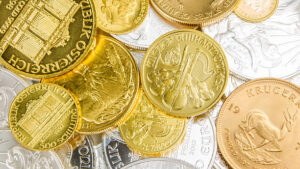Best corporate merchandise isn’t just another giveaway tossed into a conference bag. Right now, look in your kitchen drawer. You might locate at least one free pen or magnet, or even a stress ball that has seen better days. People like things, and they remember who gave them to them. That’s why. There are so many small factors that make marketing work. Go to this page.

Let’s consider real-life situations. Imagine you’re attending a bustling career fair or business expo. As you wander from booth to booth, you receive all kinds of items—some clever, some forgettable. When someone hands you a well-crafted reusable water bottle, you’re far more likely to think positively about their company later in the day compared to another business that hands you a flimsy flyer. It’s all about longevity and the role these branded objects play in our everyday lives. Far after banners come down and email campaigns are deleted, that branded mug or useful tote bag becomes a regular part of someone’s routine.
Utility is a magic ingredient in the recipe for promotional success. No one wants another useless trinket cluttering up their space, but everyone loves a handy gadget or attractive bag—especially when it’s free. Did you know that nearly 90% of people hold onto promotional gifts for more than a year? Whether it’s a quirky USB stick or a spacious canvas tote, these items continue working for your brand every single day. That’s not just outreach—it’s integrated, low-key advertising that keeps your logo top of mind.
Pay attention to trends, too. What’s hot this year might be out-of-date by next. Right now, people are flocking toward sustainable products, reusable household items, and cool wireless gadgets. These sorts of gifts blend into daily life, supporting eco-friendly habits and tech convenience. Switching from a basic calendar to a sleek, branded bamboo lunch set could mean your company becomes an even bigger part of your customers’ routines.
There’s also a fun side to promotional products that’s hard to ignore. Think back to job fairs where eager candidates sidestep the usual keychains and lanyards to grab the most unique sock designs or novelty phone holders. Distinctive items like these don’t just stand out—they help spark genuine connections. A conversation can begin over a pair of wild socks and turn into a lasting, positive impression of your brand.
Branded clothing, like hats and hoodies, turns recipients into roving ambassadors. Each time someone wears your logo, they spread your message without uttering a word. From impromptu chats at coffee shops to walks through busy streets, these wearable gifts make your branding go the distance.
Some items gather dust while others are instantly pocketed. What’s the difference? It’s all about the balance of fun and practical value. Desk games, clever stress toys, and eye-catching novelty gadgets bring a spark of joy, linking that pleasant feeling directly to your brand. That’s how real rapport gets built.
Promotional success doesn’t demand a sky-high budget. Instead, it’s about spending wisely—choosing a few quality items over piles of throwaway stuff. A single sturdy notebook or beautifully branded mug can outperform a stack of cheap pens in keeping your brand alive long after an event ends.
How you hand out these items matters, too. Make distribution memorable—mail an unexpected thank-you gift, or add a surprise prize to an online contest. Strategic timing and a bit of delight can yield dividends.
Finally, don’t skimp on the packaging. That first moment of unboxing, whether it’s a chic pouch or a customized carton, amplifies the perceived value and excitement of your gift.
In the end, great promotional products become your silent brand champions—making lasting impressions, generating good will, and telling your story long after your pitch is over. For your next campaign, go beyond checking off a box. Seek out those items that spark competition at the swag table, and watch as your brand conversation comes to life.














